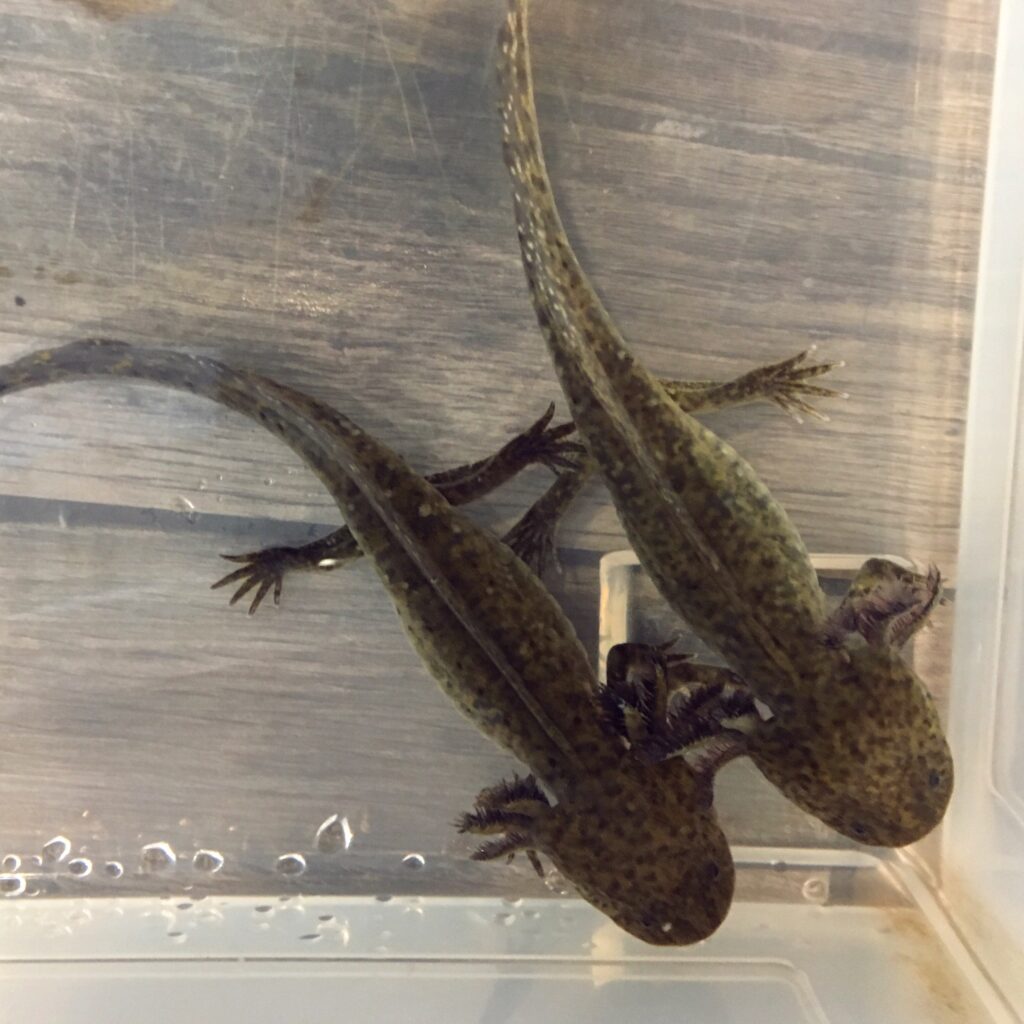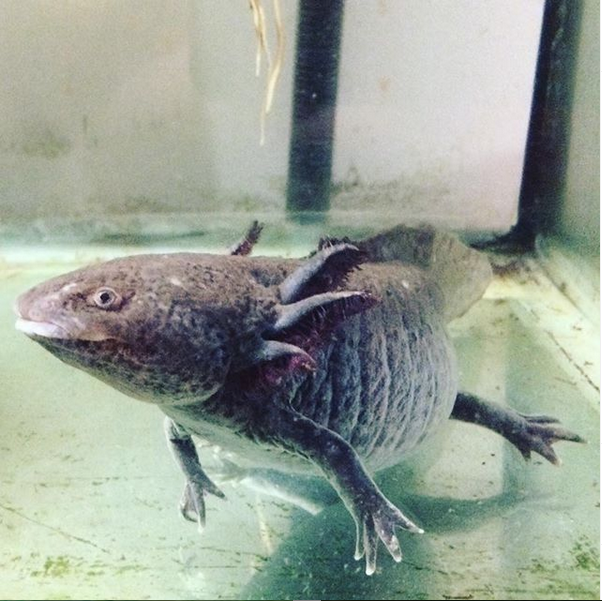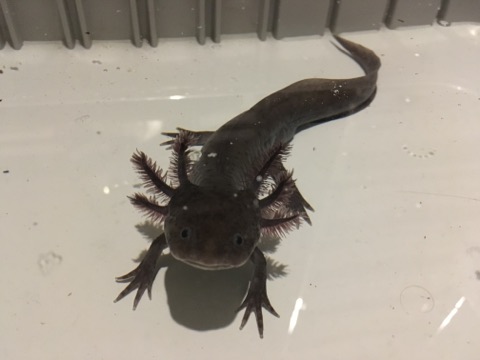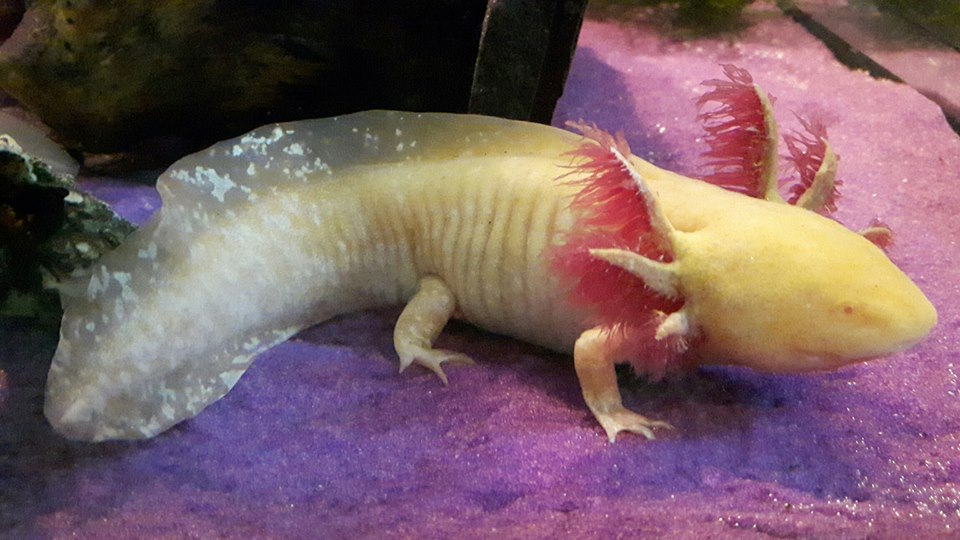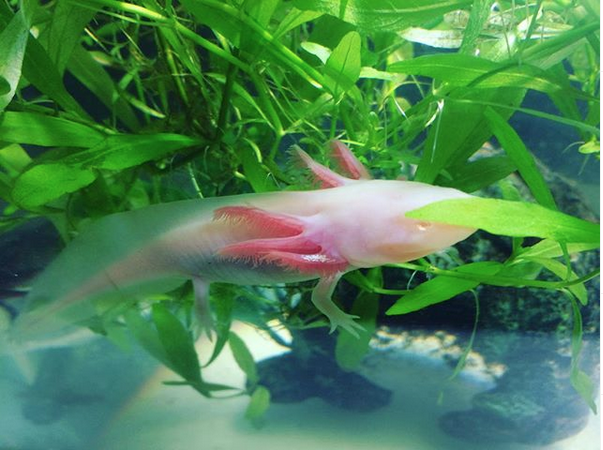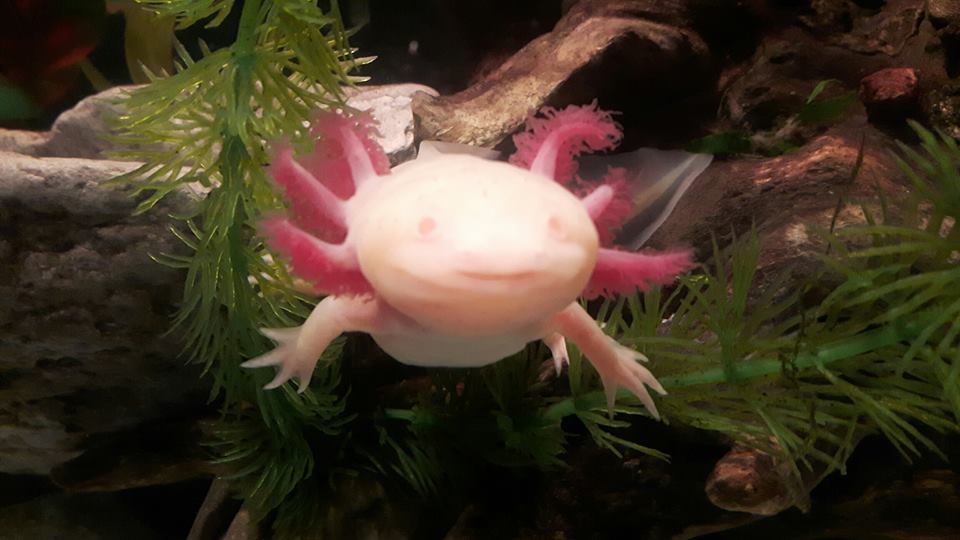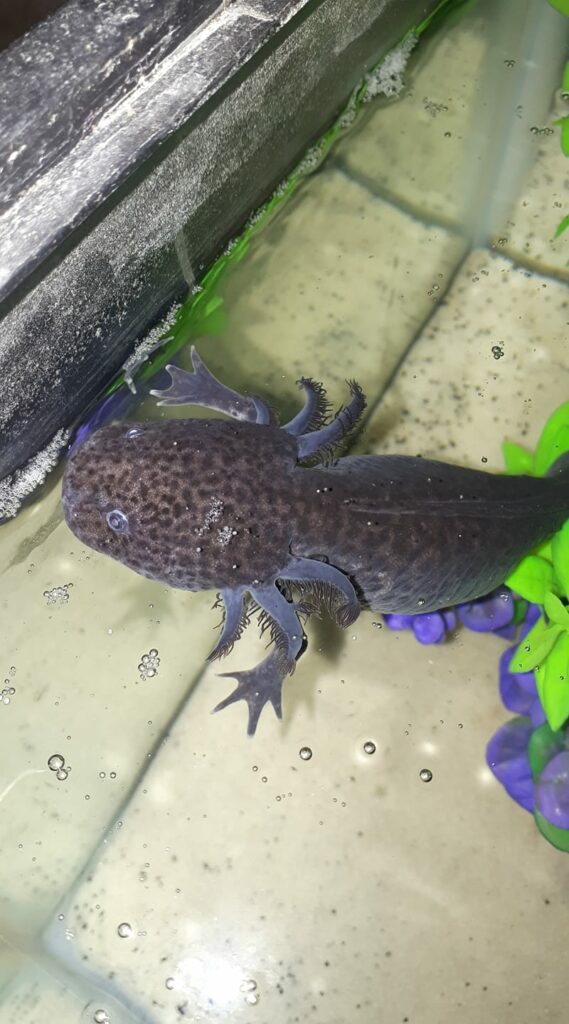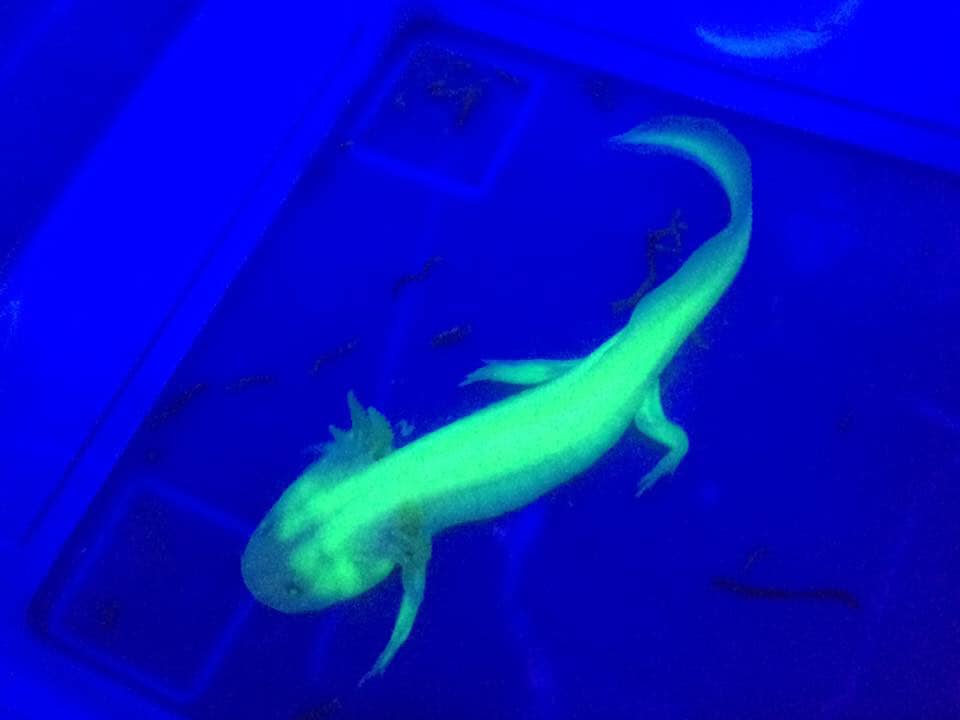In part 2 of this article, we went over albinism, a recessive genetic mutation which affects one type of pigment cells (melanophores, responsible for the dark pigment eumelanin). As you can easily guess, there are also mutations which affect the other two types of pigment cells: iridophores, which produce shiny white crystallized purines, and xanthophores, which produce yellow pteridines. In this section, we will focus on these two mutations, which are a bit more complex than albinism.
Melanism
Melanism is a recessive mutation similar to albinism, but instead of affecting melanophores, the mutation acts on iridophores. All axolotls receive either the M or m allele from each parent, which means their genotype for the melanism trait is either:
- M/M (homozygous dominant)
- M/m (heterozygous)
- m/m (homozygous recessive)
Homozygous dominant and heterozygous axolotls develop normal iridophores, which means they are able to produce crystallized purines (the shiny white pigment). Homozygous recessive axolotls are called melanoids. Since they have no iridophores, they are unable to produce cystallized purines.
This mutation also has a spillover effect: the lack of iridophores triggers the conversion of some xanthophores into melanophores. This is why melanoid axolotls show more eumelanin (black) than any other color morph, and almost no pteridines (yellow). This gives them a grey appearance, which can border on blueish under the right wavelengths.
Due to the reduced number of pteridines, which are important to immune function, melanoid axolotl larvae have a slightly lower survival rate than wild-type or albino axolotls. This is why melanoid axolotls they tend to be a bit more expensive and slightly less common on the market than other color morphs.
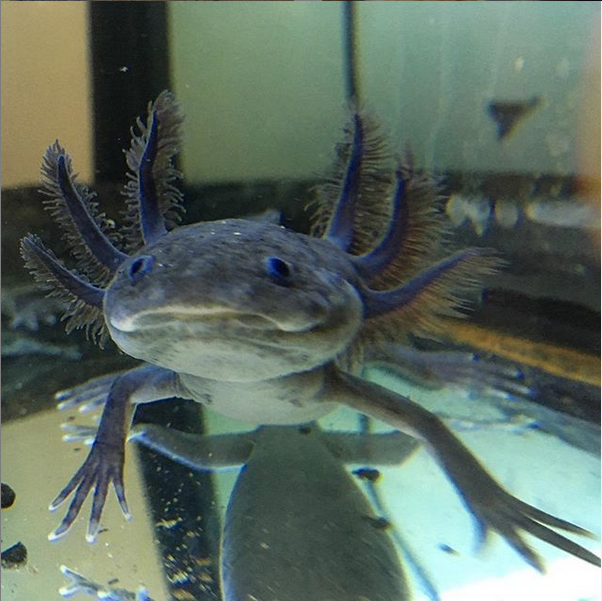
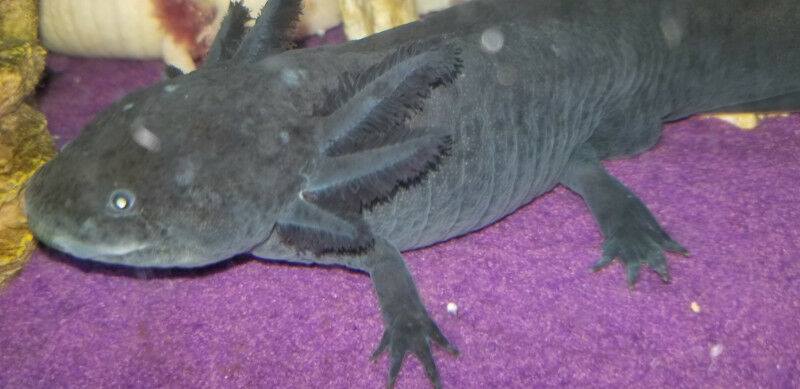
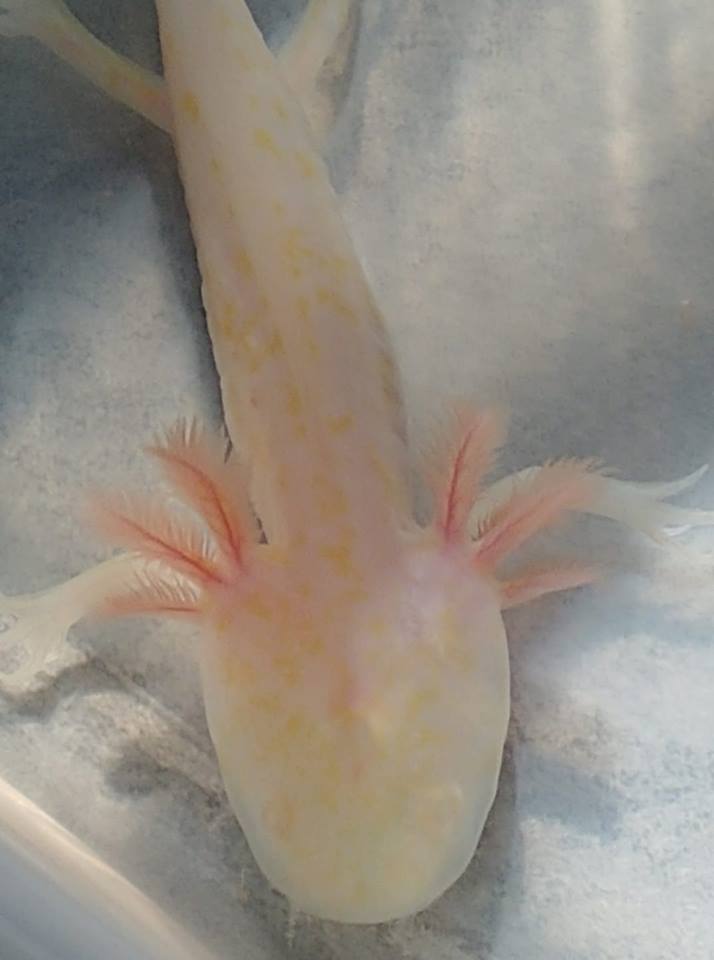
Axanthicism
As you can imagine, axanthicism acts on xanthophores, the pigment cells responsible for producing pteridines. But the name of the trait, which means “lack of xanthophores”, is actually misleading. As it turns out, axanthic axolotls do have a certain amount of xanthophores, but those xanthophores are unable to produce pteridines due to a genetic mutation, which is believed to have originated from a virus.
Even though they can’t produce pteridines, the mutant xanthophores are able to store some yellow pigments from the axolotl’s diet (chiefly riboflavin, also known as vitamin B2). This helps compensate a bit for the lack of pteridines, but since they are slowly accumulated over time, axanthic larvae still have a low survival rate compared to other color morphs. This, along with the strict import laws currently in place, explains why axanthic axolotls are nearly impossible to find on the Canadian market.
In addition to causing a complete lack of pteridines, the axanthic mutation prevents iridophores from differenciating during development. As a result, axanthic axolotls often look a lot like melanoids. One way to tell them apart is to look at them under a blueish light. The complete absence of yellow pigments at birth tends to give axanthic a purple hue, whereas melanoids are more of a blueish grey. The purple effect tends to fade over time due to the accumulation of other yellow pigments, but some axolotls (such as Sarah, below) do manage to retain it through adulthood.
To make matters more confusing, axolotls can be both axanthic and melanoid. If an axanthic axolotl is especially dark, chances are it is also melanoid, but there is no way to be certain unless the genotype of both parents is known. If an axanthic axolotl accumulates a lot of yellow pigment over the years, then it probably isn’t a melanoid, as melanism further reduces the overall number of xanthophores.
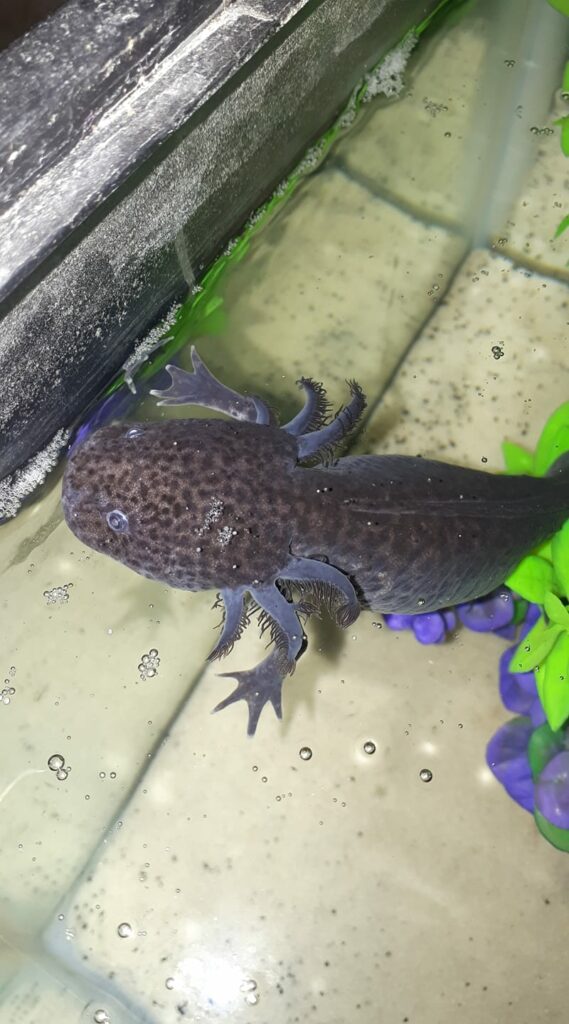
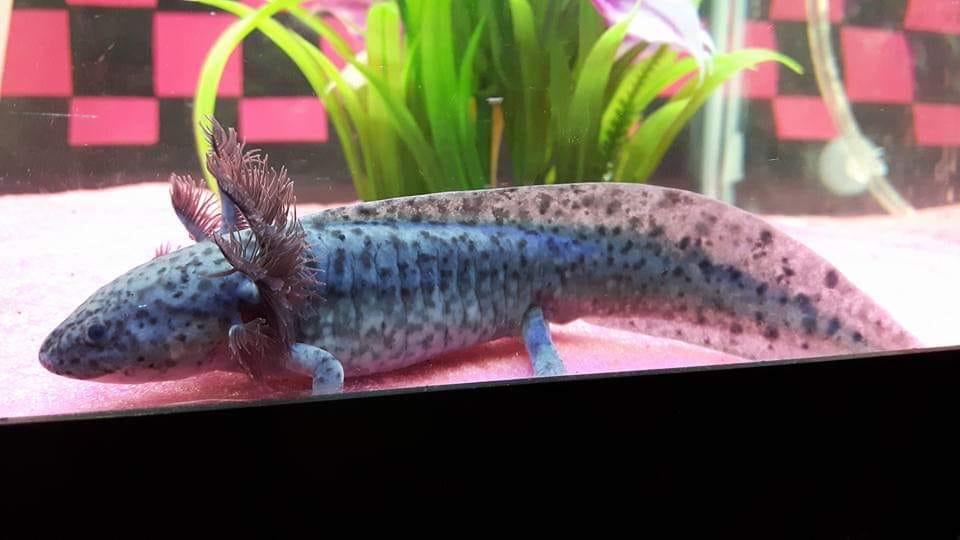
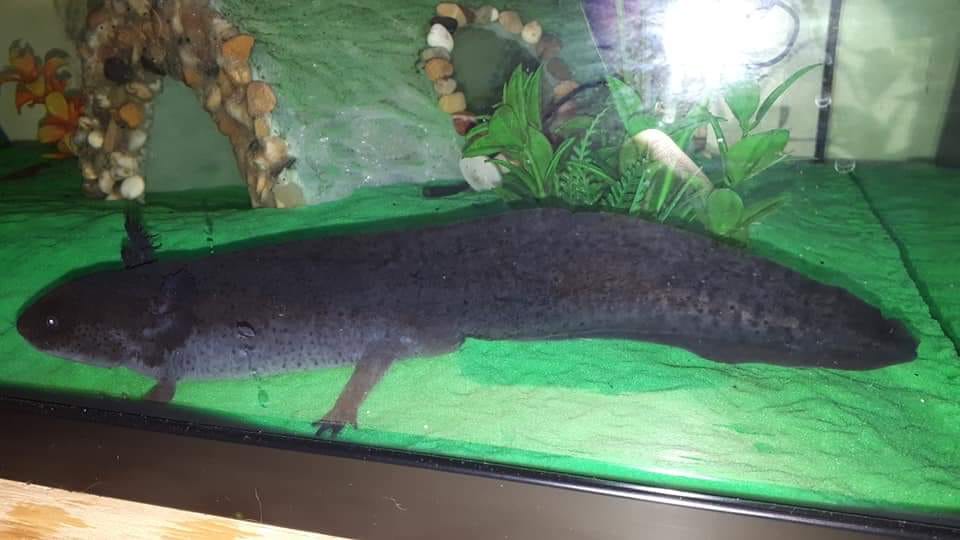
<- Axolotl Genetics, Part 2: Mendelian Inheritance and Albinism | Axolotl Genetics, Part 4: Leucism, Copper and GFP [Coming Soon!]


